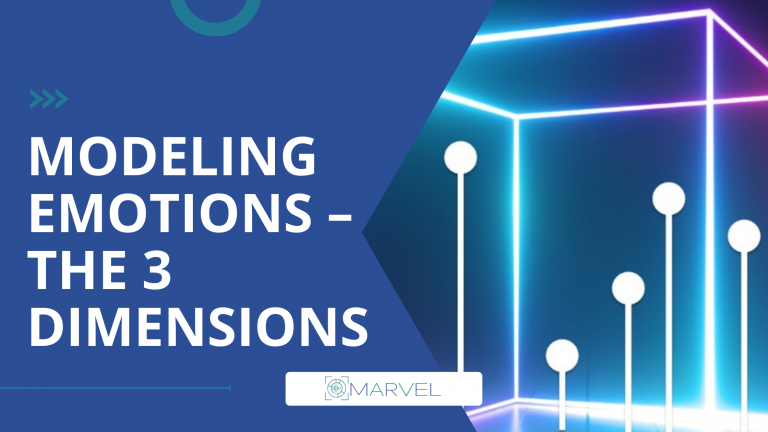Modeling Emotions – The 3 Dimensions
There are many theories and models that try to understand feelings and emotions. They try to explain emotions from different perspectives: neurobiological, cognitive, psychological.
An Affective Approach for more Effectiveness
The first step in modeling is to decide whether we should model discretely or continuously. Discrete modeling is easy to understand. Binary, for example, is the simplest: “happy” vs. “not happy,” “sad” vs. “not sad.” Mere juxtapositions, however, do not represent reality. You can be more than that, you can be happy, cheerful, excited – nuances are enough for that. Continuous modeling can do justice to that.
Emotions, when perceived, are estimated relatively intuitively. Different dimensions play a role in differentiating emotions.
Valence and Arousal to Differentiate Expressions of Emotion
Valence divides emotions into positive and negative. For example, sadness is negative and joy is positive. Depression is more negative than sadness, and arousal is more positive than joy.
To distinguish between two negative or positive emotions, a second dimension is needed. Thus, if the valence is negative for both expressions, the degree of activity can be considered for further distinction. Measured by the expression in hot anger and cold anger, the latter shows a low level of arousal, since speech is comparatively quieter and slower. Hot anger, on the other hand, can degenerate into loud shouting, rapid speech and very clear articulation. The degree of activity is thus very high and this expression of anger shows a negative valence and a high level of arousal.
Dominance as The 3rd Dimension
It is already excellent for distinguishing many emotions, but let’s go one step further. Let’s take an example: When you are afraid and panic, you experience a negative emotion, and you also scream, which means you also have high arousal. When you are angry, you also experience a negative emotion with high arousal. However, they are not similar at all. Therefore, our two dimensions are not sufficient. So what is the difference between panic and anger? Well, it is your control over the situation. It is your dominance. So the 3rd dimension will be control or dominance.
Finally, we have a 3D room that we can use to model emotions.
Everyday Process: Listening and Identifying
Now that you know this representation, try the following experiment. Close your eyes and listen to a person’s voice. You will see that you can use these dimensions to identify almost any emotion and find a space for it.
In this way, our emotions are represented mathematically. This is the basis for teaching computers to see the world in this way.
Blog signed by: AUD team
Menu
- Home
- About
- Experimentation
- Knowledge Hub
- ContactResults
- News & Events
- Contact
Funding

This project has received funding from the European Union’s Horizon 2020 Research and Innovation program under grant agreement No 957337. The website reflects only the view of the author(s) and the Commission is not responsible for any use that may be made of the information it contains.



